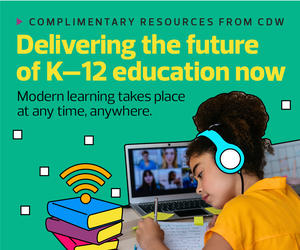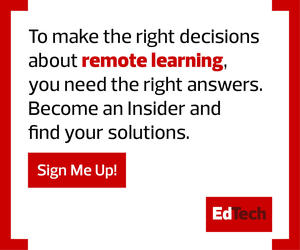Options Equal Success for Individual K–12 Students
How are we doing that? We provide our students with limited, if any, whole-group instruction. Instead, we give them more options. For us that means knowing and understanding where every student is as an individual and providing the support and structure they need for success. More options mean that things may look different across a classroom, a grade level, a school site or a district — and that is great!
More options also means considering the social-emotional needs of our students. With an eye toward helping students succeed, we started the school year with three weeks of social-emotional focus before incorporating academics.
Make Remote Learning an Option
And instead of forcing everyone back into the classroom, we launched a remote learning program for the 2021-2022 school year as an option for our students who may have medical or other challenges.
DISCOVER: Why should innovative learning should anchor the new education landscape?
Developing this program has taken the district well beyond the way we provided remote learning during the previous school year. For this program, we partnered with an experienced online learning platform that provides content and teachers.
As we pilot this new approach for our remote learning program, we will be digging into initial benchmark data to discover exactly where each student needs to start and preparing a path for them to be successful in achieving high expectations.
Support Staff in All Learning Environments
Expanding options doesn’t stop with students. Everyone in our organization has an impact on our students, and so we focus on the needs of all employees, both instructional and noninstructional.
According to the U.S. Bureau of Labor Statistics, more than 270,000 teachers have left the profession since 2016. Burnout could be a reason. Recent research from the Committee for Children found that “attention to educators’ social-emotional competencies is needed because educators face a number of professional demands and challenges.” This is why SEL for Joliet’s employees is part of our menu of options for returning to in-person learning.
Other employee-based options include stocking every teacher’s toolbox with resources to meet their needs. Those resources include virtual professional development; digital resources to use with students; interactive flat-panel displays in every classroom; Google’s suite of applications for educators and more. We are also open to new ideas that can further change our journey to best benefit every student in our district.













